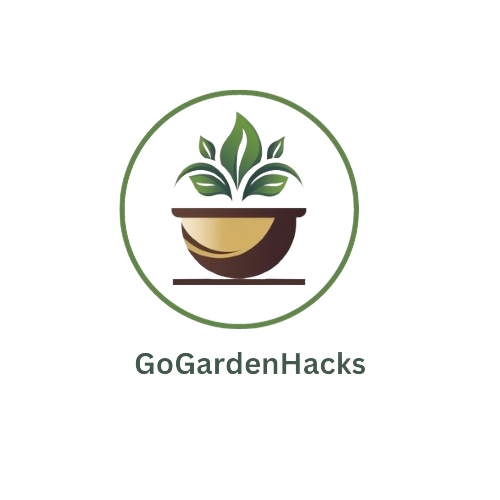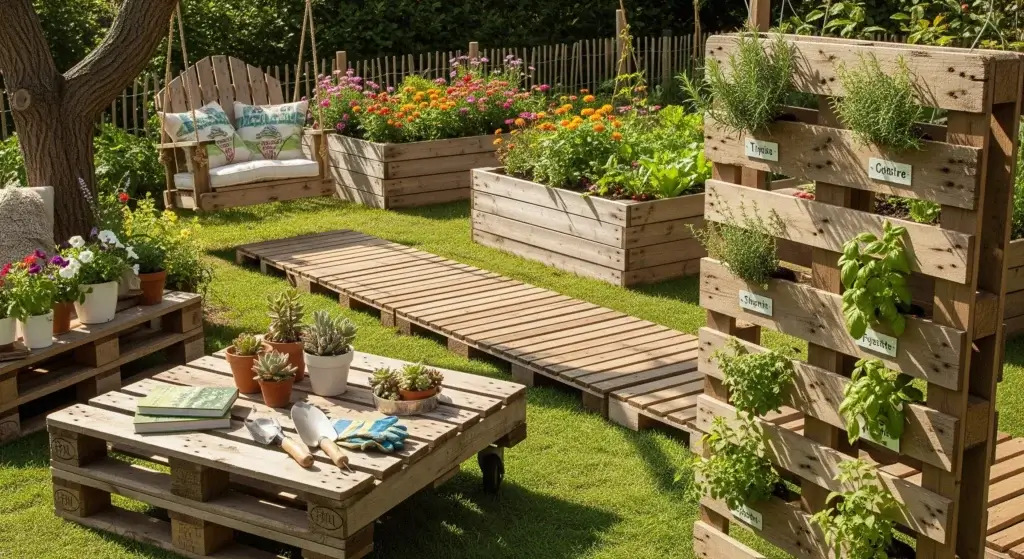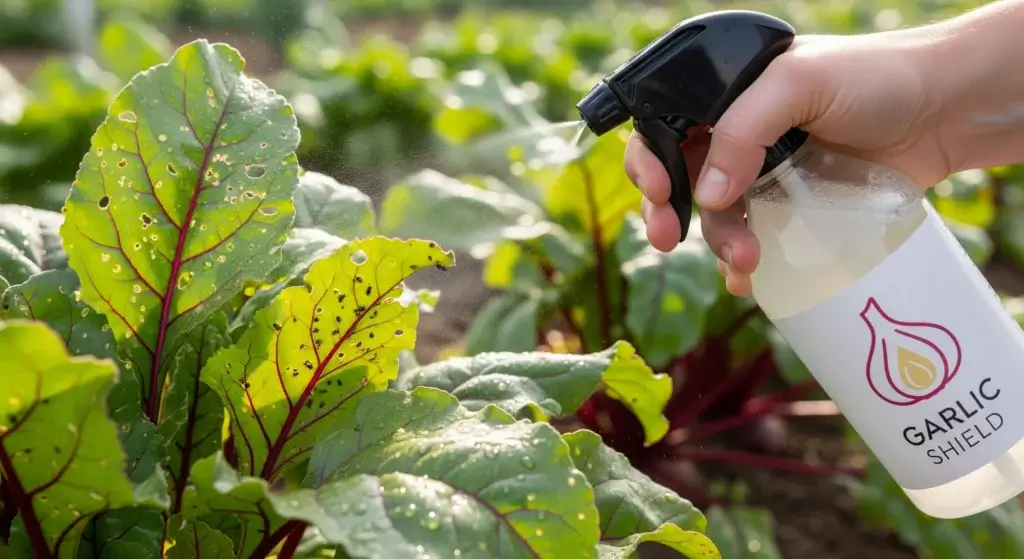
Indoor gardening is booming—but dry air is a plant killer, especially for tropical divas that crave 60–90% humidity.
Most homes sit below 40%, thanks to heating and AC, turning lush leaves crispy and stunting growth.
Humidifiers work, but they’re pricey and high-maintenance.
Enter the DIY humidity tray: cheap, easy, and perfect for a few needy plants.
It adds moisture to the air without breaking the bank or your routine.
In this guide, we’ll show you how to make one, why it works, and how to troubleshoot like a pro.
Think of it as a spa day for your plants—without the expensive bill.
The Science of Humidity: Why Your Plants Crave Moisture
Here’s the deal: plants take in water through their roots, push it up the stem, and let it out through tiny holes in their leaves called stomata.
That “letting out” part is called transpiration—basically, plants sweating. It helps them move nutrients and cool down.
But here’s the kicker: how fast they “sweat” depends on the air around them.
Dry air = turbo mode
When the air’s dry (low humidity), water inside the plant evaporates super fast.
That stresses your plant out—think crispy leaves, wilting, and sad vibes.
Humid air = chill mode
When it’s humid, plants lose less water, stay hydrated, and can focus on doing plant things like growing and looking pretty.
Tropical plants—like ferns, calatheas, orchids, and monsteras—are built for jungle life where humidity is always high.
Your living room with the AC blasting? Not exactly a rainforest.
That’s where a humidity tray comes in. It’s a simple tray with water and pebbles that raises moisture around your plant.
You’re basically creating a tiny rainforest bubble so your plant doesn’t feel like it’s stuck in the Sahara.

- Read also: DIY Greenhouse from Old Windows: The Ultimate Guide
- Read also: DIY Cold Frame Plans: Complete Guide to Year-Round Garden Extension
What is a DIY Humidity Tray and How Does It Work?
A DIY humidity tray is the easiest way to bump up moisture around your tropical plants—no fancy gadgets needed.
It’s cheap, low-effort, and surprisingly effective.
Here’s what it is:Take a shallow tray, toss in some pebbles, gravel, or LECA (those round clay balls plant nerds love), and pour in water just below the top of the pebbles.
Then sit your plant pot on top—not in the water, just resting on the pebbles.
So… how does this work?
Step 1: Water evaporates
The water in the tray slowly turns into vapor and rises into the air.
Step 2: Vapor hangs around your plant
Since the tray is right under your plant, the vapor gathers around the leaves, making a tiny moisture bubble—like a mini rainforest right on your windowsill.
Step 3: Less stress = happy plant
With more humidity in the air, your plant doesn’t have to work as hard to keep water in.
That means less leaf crispiness, fewer pest issues, and better growth.
And the pebbles? They’re not just for looks.
They keep the pot out of the water, so roots don’t sit in soggy soil and rot. Root rot = plant funeral. Avoid it.
Step-by-Step Guide: Creating Your Own DIY Humidity Tray
Humidity trays are the lazy plant parent’s secret weapon—zero tech, zero stress.
Here’s how to make one from stuff you probably already have.
Materials you’ll need:
- Tray – Anything shallow and waterproof: a plant saucer, baking tray, old Tupperware lid, whatever fits your vibe.
- Pebbles or leca – Grab some small rocks, aquarium gravel, or clay balls (LECA) to keep your plant above the water.
- Water – Tap water works. Use filtered if your water’s super hard and you hate crusty white buildup.
- Plants – This whole thing is for them. Grab your drama queens—ferns, calatheas, orchids, etc.
Instructions:
1. Pick your tray
Find something shallow and flat. It should be just a bit bigger than the base of your plant pot.
You’re not building a swimming pool—just a shallow puddle with style.
2. Add pebbles or LECA
Dump in enough pebbles to make a layer about 1–2 inches deep.
This gives the pot a solid base to sit on without touching the water.
3. Pour in water
Add water until it sits just below the top of the pebble layer.
Key move: Don’t let the pot sit in water. If water touches the bottom of the pot, you risk root rot—and nobody wants a mushy plant.
4. Place the plant
Set your plant on top of the pebbles. Make sure it’s level and stable.
You’re going for “spa day” vibes, not “wobble and tip.”
5. Find the right spot
Put your tray somewhere with good light—bright and indirect is usually best for tropical plants.
Skip full sun on the water or you’ll end up with an algae aquarium instead.

Maintaining Your DIY Humidity Tray: Tips for Success
Humidity trays are pretty chill. Once you set one up, it mostly runs on autopilot.
But a few quick habits will keep it clean, effective, and your plants thriving.
1. Keep the water topped up
Water evaporates. That’s the whole point. But if it runs out, your tray stops working.
Check the water every day or two, especially if your home is dry or it’s hot.
Add more water when the level drops below the pebble line.
No need to overthink it—just keep it from drying out.
2. Clean it
Gunk happens. Algae can grow. Minerals from tap water can crust things up.
Once a month (or sooner if it looks gross), dump out the water, rinse the pebbles or LECA, and wipe the tray.
No bleach or soap needed—just a good rinse. If you’re using LECA, give it a solid rinse and reuse it.
3. Watch your plants
Look for signs your plants are vibing: new leaves, no more crispy tips, and better growth.
Also watch for problems. If a plant starts looking droopy or mushy, check to make sure the pot isn’t sitting in water.
The tray should add humidity, not drown roots.
4. Teamwork = more humidity
Want bonus humidity without effort? Group a few tropical plants together.
They naturally release moisture through their leaves, so they boost each other’s humidity levels just by hanging out.
5. Don’t rely on misting
Sure, misting looks cool and feels plant-parenty. But it’s mostly a short-term fix—water evaporates fast and doesn’t do much long-term.
Humidity trays, on the other hand, keep the air moist all day. So skip the spray bottle and let your tray do the work.
The Broader Impact: Creating a Thriving Indoor Oasis
Sure, DIY humidity trays help your plants.
But they also do something bigger—they make indoor gardening easier, cheaper, and more fun.
And if you’re a brand or agency in the home and garden space, this kind of content hits home for your audience.
Confidence boost
When people build something themselves—even something simple like a humidity tray—they feel more in control.
It’s not just about keeping a fern alive. It’s about learning, experimenting, and feeling proud when their plant finally stops throwing a tantrum.
Budget-friendly
Let’s be real: not everyone can afford fancy humidifiers.
A tray with rocks and water? Way more doable.
Showing low-cost plant hacks makes you more relatable—and helps new plant parents stick with it instead of giving up.
Sustainable is the vibe
Using old trays, repurposed lids, or LECA balls? That’s reuse in action.
No electronics, no plastic waste—just a simple way to give plants what they need.
And it aligns perfectly with the eco-conscious crowd who want their homes to be green in every way.
Build trust by teaching
Sharing helpful, no-nonsense plant tips positions your brand as someone who gets it.
You’re not just selling—you’re helping.
That builds trust, grows your community, and keeps people coming back for more smart, doable advice.

- Read also: Tips and Tricks: Budget-Friendly DIY Garden Shed
- Read also: Step-by-Step Guide: DIY Butterfly Garden Design Ideas
Final Takeaway: Humidity Trays = Plant Glow-Up
Tropical plants hate dry air—and most homes are way too dry.
That’s where the DIY humidity tray comes in.
It’s cheap, easy, and based on real plant science.
Just add water (literally), and you’ll reduce stress on your plants, boost growth, and avoid crispy leaves.
No fancy gadgets. No big budget. Just a simple tray that helps your plants feel like they’re back in the rainforest.
Set it up, keep it clean, and let your indoor jungle do its thing.



